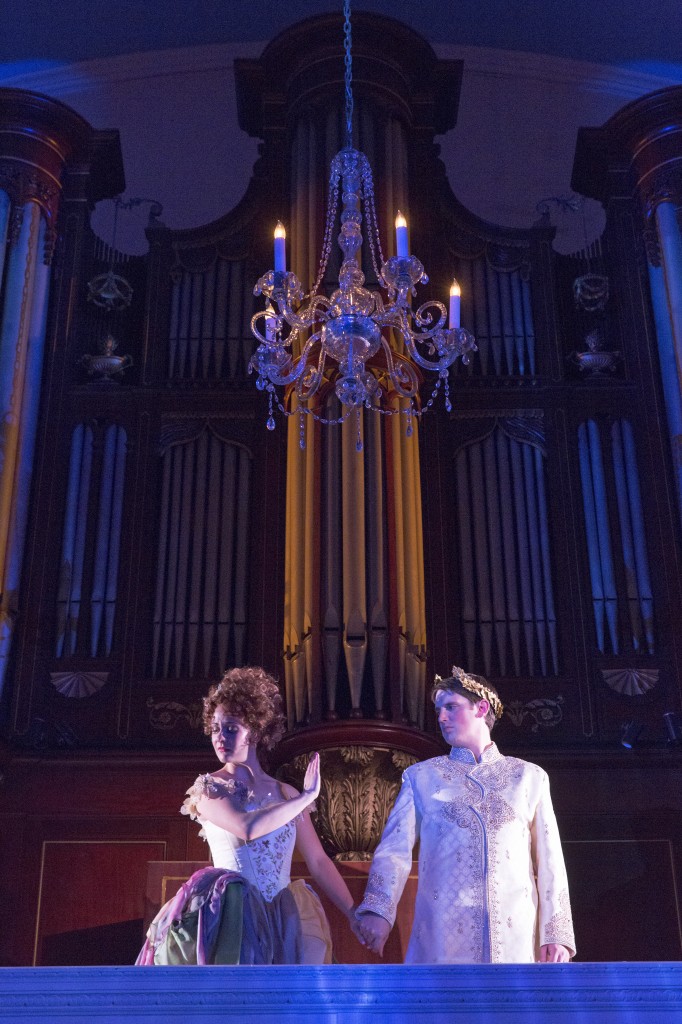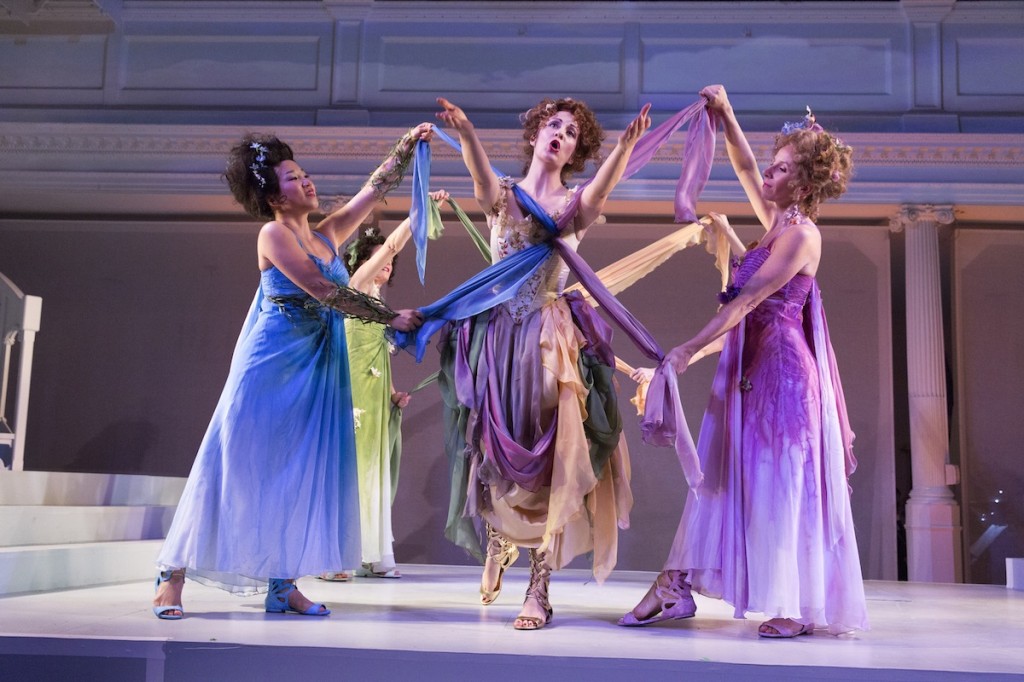Gotham Chamber Opera soars with Charpentier’s “Orphee”

Jamilyn Manning-White and Daniel Curran in Charpentier’s “Les descente d’Orphee aux enfers” at Gotham Chamber Opera. Photo: Richard Termine
The new year has begun with a wonderful and deeply welcome production of Marc-Antoine Charpentier’s beautiful and beautifully concise opera La descente d’Orphée aux enfers, presented by Gotham Chamber Opera at St. Paul’s Chapel in Trinity Church.
That this was the New York stage premiere, more than 325 years since Charpentier wrote the work, shows the dearth of Baroque opera in New York.
There was a great flowering of the form before Mozart (and outside of Handel’s dramatic works) that produced some of the finest operas in the repertoire. The distance of time also hints at how deeply the shadow of Charpentier’s contemporary Lully, and his later peer Rameau, fell across his career. Lully, as a professional rival and Louis XIV’s favored opera composer, specifically sought to limit Charpentier’s dramatic opportunities.
Charpentier’s music is excellent and despite the pioneering efforts of William Christie, remains largely unknown. He was a singer, and wrote with intuitive ease for the voice. His lines articulate words and express emotions with a lyricism so finely honed that its ease belies the challenge of crafting such effective and stylish music.
Orphée takes a compact hour to play, and the two acts might be the only finished parts of a larger projected work. But the story is there in full, opening with a brisk wedding of Orphée and Eurydice, told in large part through ballet. The staging, from director Andrew Eggert and designer Julia Noulin-Merat, is built on knowledge of dramatic practice from the Sun King’s court, especially in the use of narrative choreography from Doug Elkins.
The stage platform sits in the chancel, under the organ’s loft, where the gods reside and to which Orphée ascends. There is no other setting, except for effectively lurid flame projections, from S. Katy Tucker, all around the nave in the second act. The costumes, by Vita Tzykun, are an interesting and effective cross between 17th Century French court and Summer of Love San Francisco and stylish rock and roll Gothic for the gods and martyrs of the underworld.
The more extended second act, set entirely in Hades, is where the opera stands out dramatically from all other versions of the story. Orphée, with the aid of Proserpine, uses his courage and cleverness to appeal to the benevolence of Pluton, with veiled flattery, and the parallel to the courtiers of Louis XIV is unmistakable. Charpentier’s lines have a unique combination of lyricism, elegance and plainspokenness. That last quality places his music, and the character of Orphée, at a distance from the court, seducing with moral logic rather than style.
The singing in this production was consistently excellent without any weak links, as has become standard with Gotham Chamber Opera. Tenor Daniel Curran was Orphee, singing with confidence, clarity and grace. The character is exposed at the forefront in the second act, and Curran was outstanding throughout.
Jamilyn Manning-White sang Eurydice with a lovely soprano and was affectingly understated in her death. Mezzo Mary Feminear was a powerful Proserpine (and doubled as Aréthuze).
The bass voices were particularly outstanding: John Brancy managed two drastically different colors as both Apollon and Tantale, and Jeffrey Beruan was an effortlessly powerful and commanding Pluton, with enough suavity to be bent towards mercy by both his wife and Orphée. Notable ensemble singers who portrayed supporting roles were Yunghee Rhie, Marguerite Krull, Cullen Gandy and Gerard Michael D’Emilio.
The music is the fundamental star, and this was, (finally in New York City!), terrific Baroque instrumental playing. Neal Goren, as conductor and artistic director, deserves the bulk of the credit for bringing the opera to the stage and organizing a capable, strong eight piece ensemble.
The music-making rivaled the sole recording of this opera from Christie and Les Arts Florissants. There was the passing flub, but the playing was full of stylish phrases and an inherent rhythmic lilt. The throaty oboes of Gonzalo Ruiz and Stephen Bard were an important part of the sound, and the continuo playing from gamba player Motomi Igarashi and theorbist Daniel Swenberg was full of steady life.
Everything in this production is clear and direct, supporting the power of Charpentier’s art. The opera’s moving finale is wordless, just Orphée leading Eurydice slowly up a spiral staircase to the loft, accompanied by a lovely, simple phrase that mixes dignity with tragedy.
The last notes come with a slight rallentando, then sustain. Orphée cannot resist and turns, Eurydice raises her hand in warning and fright. Everything slows down, then stops. So simple, so powerful.
La descente d’Orphée aux enfers will be repeated 7 p.m. Friday and 5 p.m. Sunday, at St. Paul’s Chapel gothamchamberopera.org



